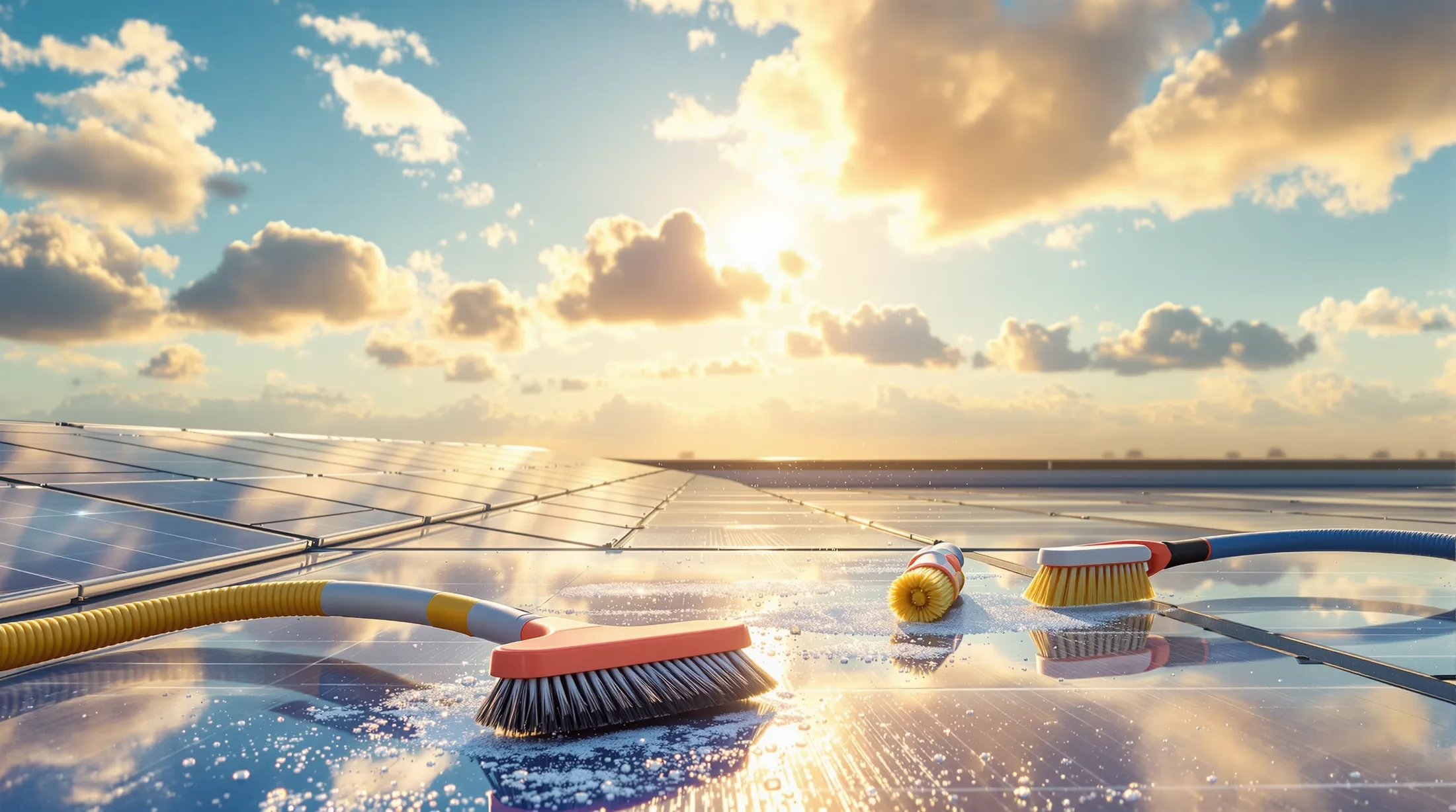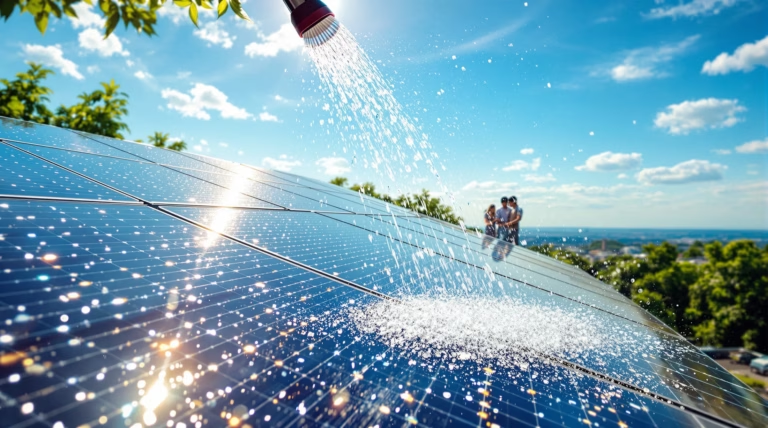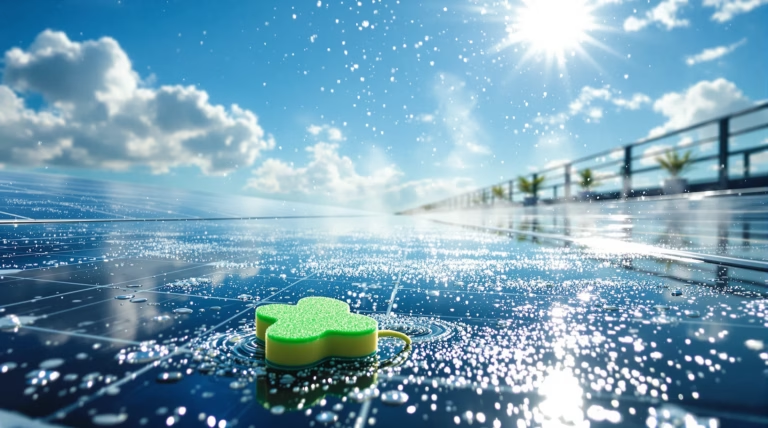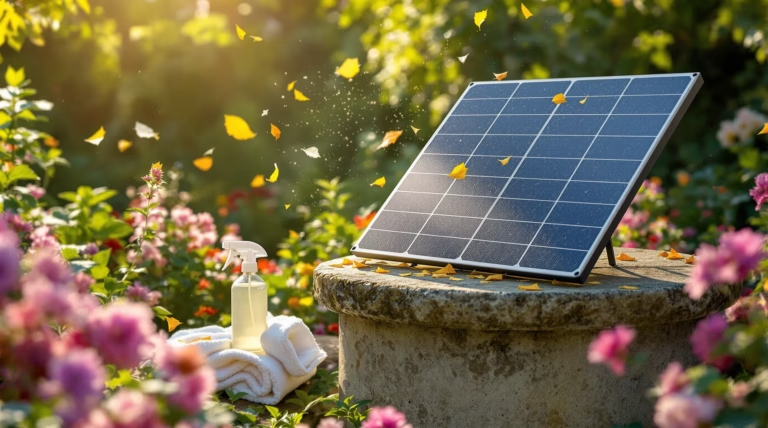Best Way to Clean Solar Panels: A Comprehensive Guide
Investing in solar panels is a significant step towards sustainable energy, but their performance heavily depends on proper maintenance. Let’s explore how to keep your solar panels operating at peak efficiency through effective cleaning methods and maintenance strategies.
Why Cleaning Solar Panels is Essential
Solar panels face constant exposure to environmental elements that can significantly impact their performance. Accumulation of dirt, dust, bird droppings, pollen, and debris can block sunlight from reaching photovoltaic cells, reducing energy output. This soiling effect can decrease energy production by up to 7% annually in the United States and reach a staggering 50% in dustier regions like the Middle East.
Regular cleaning not only maximizes your return on investment through increased energy production but also protects your panels from potential damage. Extended exposure to accumulated grime can cause micro-scratches and surface damage, potentially leading to costly repairs or early replacement needs.
Impact of Dirt and Debris on Solar Panel Efficiency
Even a thin layer of dust can significantly affect your solar panels’ performance. Surface contaminants create a physical barrier that prevents sunlight from fully reaching the photovoltaic cells, reducing electricity generation efficiency. Some owners have reported efficiency increases of up to 25% after their first cleaning.
- Physical barrier prevents optimal sunlight absorption
- Efficiency reduction varies based on panel quantity
- Installation angle affects dirt accumulation
- Local climate influences cleaning needs
- Proximity to pollution sources impacts maintenance frequency
How Often Should You Clean Your Solar Panels?
The ideal cleaning frequency depends on your specific circumstances. While experts recommend cleaning at least once or twice annually, several factors may require more frequent maintenance:
| Environmental Factor | Recommended Cleaning Frequency |
|---|---|
| Heavy pollution areas | Quarterly |
| High pollen regions | Quarterly |
| Near dusty roads | Quarterly |
| Regular rainfall areas | 1-2 times annually |
| Standard conditions | Twice annually |
Best Practices for Cleaning Solar Panels
Timing and technique are crucial for effective solar panel cleaning. Clean during early morning or late afternoon when panels are cool to avoid thermal stress. Use gentle materials and proper tools to protect your investment.
DIY Solar Panel Cleaning Methods
- Use an extended water-fed pole with soft brush attachment
- Start with plain water rinse to remove loose debris
- Apply mild dish soap solution
- Work methodically with gentle, overlapping strokes
- Rinse thoroughly with clean water
- Use squeegee attachment to prevent water spots
Professional Solar Panel Cleaning Services
Professional services offer specialized equipment and expertise, particularly beneficial for difficult-to-access installations. They typically use deionized water systems and industrial-grade tools, with service costs ranging from $150-$350 depending on system size and accessibility. These services often include comprehensive inspection and can help maintain warranty validity while ensuring optimal system performance.
Tools and Products for Effective Solar Panel Cleaning
Selecting the right tools for solar panel cleaning is essential for maintaining efficiency without damaging these sensitive surfaces. A comprehensive cleaning toolkit should include gentle materials and effective designs that protect your solar investment while ensuring thorough cleaning.
- Soft-bristle brushes with extendable handles
- Adjustable spray nozzle hose
- Cleaning solution bucket
- Chemical-free gentle detergent
- Specialized solar panel cleaning systems (SOLAR ROCKER, SOLAR MAX)
Recommended Cleaning Tools and Products
| Tool Type | Specifications |
|---|---|
| Telescoping Brush | Soft bristles, 12+ feet extension |
| Cleaning Solution | Dawn dish soap (few drops) or vinegar solution (1:8 ratio) |
| Water Equipment | Garden hose with adjustable nozzle |
| Drying Tools | Rubber-blade squeegee, microfiber cloths |
Avoiding Harmful Cleaning Products
- Ammonia-based cleaners (like Windex) – cause streaking and residue
- RainX and similar products – create light-blocking films
- Abrasive cleaners – risk surface scratching
- Alcohol or acetone-based products – can damage protective coatings
- High-alkaline soaps – leave difficult-to-remove residue
- Pressure washers – risk damaging panel seals and components
Safety Precautions When Cleaning Solar Panels
Safety must be the primary consideration in solar panel maintenance. With many installations located on rooftops, fall risks present a significant hazard. Always assess whether panels can be cleaned from ground level using extension tools – the safest approach for homeowners without professional training.
Essential Safety Gear and Practices
- Well-fitted safety harness with secure anchor point
- Hard hat for head protection
- Rubber-soled shoes for traction
- Knee pads for extended cleaning sessions
- Extension ladder (following 4-to-1 rule)
- Spotter on ground level
When accessing roof-mounted panels, work during cooler hours to avoid heat exhaustion and slippery surfaces. Always deactivate your solar system before cleaning and avoid working in adverse weather conditions. If you have any doubts about safely performing the cleaning, professional services are the recommended option.
Environmental Factors Affecting Solar Panel Cleaning
The environment surrounding your solar installation directly influences panel soiling rates and cleaning frequency requirements. Geographic location is particularly significant, with panels in dusty, arid regions experiencing efficiency losses of 25-30% when heavily soiled, compared to just 5-10% in areas with regular rainfall that provides natural cleaning.
| Environment Type | Specific Challenges |
|---|---|
| Coastal Areas | Salt spray accumulation, corrosive residue |
| Agricultural Regions | Pollen deposits, fertilizer dust films |
| Urban Settings | Smog, industrial emissions, bird droppings |
| Desert Regions | Heavy dust accumulation, minimal natural cleaning |
Impact of Location and Weather Conditions
- Desert installations (Nevada, Arizona) – up to 30% efficiency loss within months without cleaning
- Coastal areas – marine residue and salt spray requiring regular maintenance
- High-moisture regions – hard water deposits from morning dew evaporation
- Snow-prone areas – natural sliding on tilted panels, occasional manual removal needed
- Heavy pollen zones – additional cleaning during peak seasons
Monitoring Energy Production for Cleaning Needs
Modern solar installations include monitoring software that tracks daily energy output, enabling data-driven maintenance decisions. Industry experts recommend cleaning intervention when sustained production drops by 5-10% below expected levels, as energy recapture typically justifies cleaning costs.
- Establish seasonal performance baselines
- Set up automated production alerts
- Create monthly performance benchmarks
- Document post-cleaning improvements
- Monitor systems near construction zones or wildfire-prone areas more frequently







